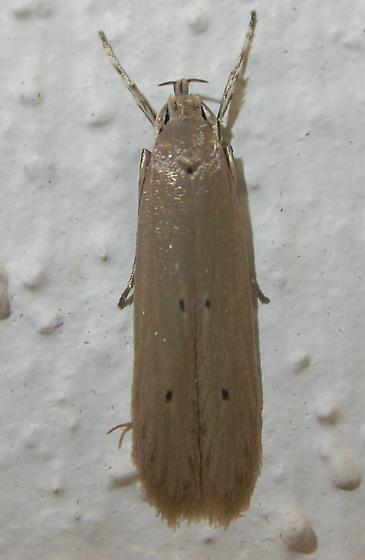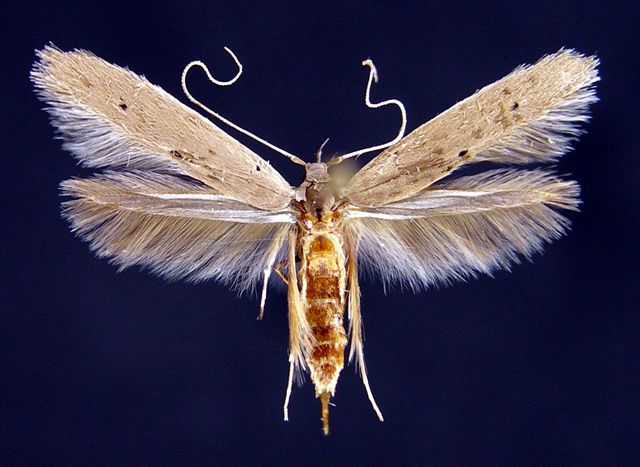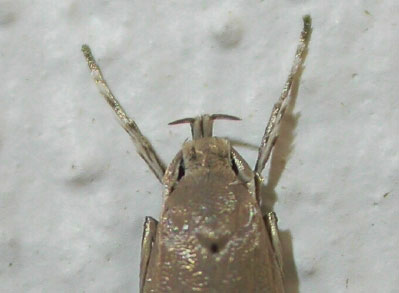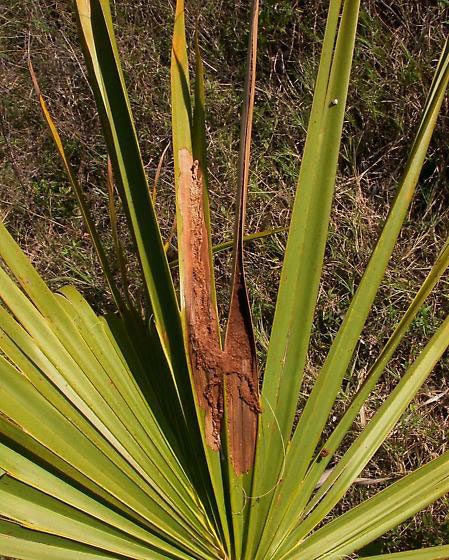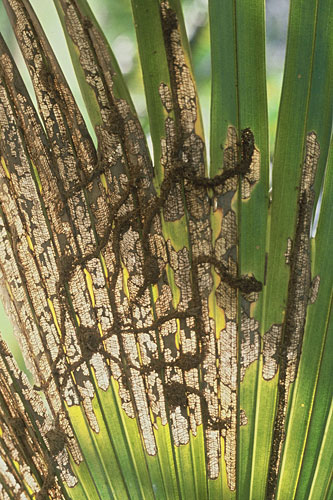Palm Leaf Skeletonizer
|
adult; Photo © Jeff Hollenbeck |
|
adult; Photo © Jim Vargo, Mississippi State University |
|
close-up of adult head; Photo © Jeff Hollenbeck |
|
adult on palm leaf; Photo © Jeff Hollenbeck |
|
late instar larva; Photo © Machele White |
|
early instar larva; Photo © Jeff Hollenbeck |
|
palm leaf skeletonizer damage to palmate palm; Photo © Jeff Hollenbeck |
|
palm leaf skeletonizer damage to Cocos nucifera (pinnate palm); Photo by F.W. Howard |
|
palm leaf skeletonizer damage to Washingtonia robusta (palmate palm); Photo by F.W. Howard |
Scientific name
Homaledra sabalella (Chambers)
Family
Coleophoridae
Description
Adults: Length approximately 6.5 mm; wingspan 16 mm; color gray to gray brown; forewing with two minute black spots toward the hind margin; hindwing unmarked; antennae filliform.
Larvae: Length approximately 16 mm; surface smooth; color whitish-green to whitish-yellow; stripes faint; head and cervical shield are dark yellow; eight narrow, irregular, faint reddish-brown stripes from prothorax to last segment of abdomen.
Diagnostic features
Adult: Small gray moth; two minute black spots are present toward the hind margin of each forewing.
Larvae: Very small, weakly striped, with non-contrasting head and shield.
Distribution
United States (Florida and California), Caribbean (Dominican Republic, Puerto Rico)
Hosts
Palms are the only recorded host. Hosts include the palm genera Butia, Caryota, Cocous, Latania, Phoenix, Sabal, Serenoa, Syagrus, and Washingtonia.
May be confused with
Homaledra heptathalams is known in Florida from Sabal palmetto. The larvae of this species are solitary, while H. sabalella are in colonies.
Additional comments
Caterpillars feed on the upper and lower leaf surfaces, producing large quantities of "frassfrass:
the mixture of plant and fecal material left behind by many phytophagous insects
" that is often the first conspicuous sign of infestation. Tissue between the leaf veins is usually the preferred food, whereby the veins remain intact giving the leaf a skeltetonized appearance.
In Florida, larvae are present throughout the year and complete five generations per year in northern Florida.
The pattern of damage by this insect is different on palmatepalmate:
fan-leaved
vs. pinnatepinnate:
feather-leaved
palms.


